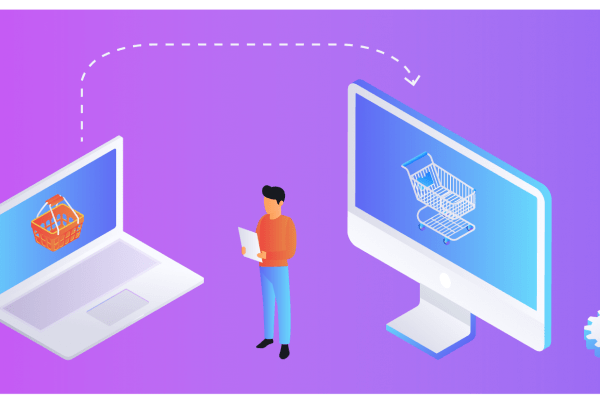Let’s face it, in todays world there’s acronyms for everything. I’ve myself have laughed out loud saying LOL. I know…I know. I’m sure you’ve also been in a conversation when someone threw a term out there you may not have known what it meant but you played it cool, that’s fine, we all do that.
So, let’s go over the words that are important to know when you’re a digital marketer or in the e-commerce world. So, let’s start listing them, in no particular order.
DIGITAL MARKETING & ECOMMERCE TERMS (AND ACRONYMS)
KPI (Key Performance Indicator) – You’ll hear this in every meeting, from every company. This is one you HAVE TO KNOW. There’s no not knowing KPI.
CPC (Cost Per Click) : Cost per click is a common acronym and term for all digital marketers. This is used when speaking of any paid media being paid search, ads, etc.
SEO (Search Engine Optimization): Who hasn’t heard the acronym and term SEO by now? This is by far what set off may be the digital marketing industry to what it is today. SEO is still widely discussed and focused on in organizations and individuals in digital marketing. Search is still king.
SEM (Search Engine Marketing): Just what it says, SEM is referred to search engine marketing and in discussion, usually points out at all facets of search like SEO, PPC, etc.
CPI / CPM (Cost Per Impression): If you’re not paying per click, you’re paying for impressions. This may be the more confusion ones for novice digital marketers. Usually, a company will charge CPM rates based per 1,000 impressions (views.)
Remarketing / Retargeting: Remarketing or retargeting is used when speaking about marketing to consumers whom already have visited your web property. Most advertising platforms offer some form of retargeting strategies to market back to those consumers who have already come across your website.
Quality Score: Quality score is usually used in conversation in related to Google Ads, at least where it originated. Quality score in ads are a metric used to see how well optimized the ad is from keyword usage to landing pages. The quality score plays a role into how costly an ad can be due to click through rate, etc.
CTR (Click Through Rate): Click through rate refers to the rate of click an ad or organic listing typically has. Let’s say 100 people saw your ad and 10 people clicked, that would be considered a 10% CTR. This metric is extremely important in the world of digital marketing as its a big performance metric.
CPA (Cost Per Acquisition): CPA is a must know these days. This IS the performance metric you want to know. This metric tells you the cost per acquisition of what it cost to make a sale or acquire a customer.
CTA (Call To Action) This widely used and discussed in regards to copy or design elements on websites or landing pages. The call to action are words like Add To Cart, Buy Now, Call Today, and many many others that tries to engage the consumer to take an action within the ad or webpage.
LTV (Life Time Value): May be the most important metric to a business and a digital marketer, why? This tells the value a customer is worth to a business, knowing this value, the marketing budget and spend becomes a lot more targeted knowing what you can spend to acquire a customer for profitability.
Pixel: How many times have you heard this term lately? Did you install the pixel? Did you make sure the pixel is firing? Make sure the pixel is working on the thank you page. The pixel is a snippet of code that tracks action back from a source who is sending the customer to your page to document certain actions being taken. Simply put, it’s a tracking snippet to get data from another source.
DA (Domain Authority): If you’re invovled in SEO, you’ve heard and used this, if you’re not, than may be not. Domain authority is used to describe the strength of a domain (webpage.) This is a very strong SEO signal to search engines when link building. It’s basically a search engine score developed by a company called Moz that tells you the strength of a domain from 1 to 100. The higher the score, the more authority the domain holds.
PA (Page Authority) Seemingly the same as DA, page authority actually drills down to each page of a website. Yes, each page of a website holds a certain amount of authority as Google ranks pages in a website differently for different terms as each piece of content (page) holds different weight to the search engine due to the nature of the quality of content and other factors.
Bounce Rate: Bounce rate refers to a single session visit from a customer that enters a page on your website and leaves without taking any action at all and ‘bounces’ out. While bounce rate has been a hot topic debate within the SEO community as a ranking signal, its worth noting that time on site may correlate to this metric as ranking influence as well.
Above The Fold: Simply put, above the fold is any content on a web page that is seen before a user has to scroll. Above the fold is known as the more important aspect of design. It’s the first impression a user gets about the page they are entering and usually the user makes a decision from seeing it pretty quickly if they want to stick around or bounce.
A/B Testing (A/B Split Testing): This simply refers to testing different versions and variations of ads, webpages, etc. When you’re A/B testing, you’re just using other versions to run test in search of better CTR, CPA, etc. 🙂
CRR (Customer Retention Rate): Just what the words mean, the CRR is how long you retain a customer. This can be the same as CLV, this is more widely used within subscription models.
Churn Rate (CR): Churn rate, in its broadest sense, is a measure of the number of individuals or items moving out of a collective group over a specific period. It is one of two primary factors that determine the steady-state level of customers a business will support. This is widely discussed within subscription models.
Conversion Rate: Your conversion rate is a measure of overall actions taken to the number of users available to take that action. Quick example, 100 people visit your website, 10 people purchased, you have a 10% conversion rate. E-Commerce industry conversion average rates are between 1-3%.
PPV (Pay-Per-View): Pay per view is defined by your video or ad/image being visible on the page and 100 percent in view for a specific duration of time defined at the discretion of the publisher.
ROI (Return on Investment): Need I say more?
ROAS (Return On Ad Spend): Not used as often as ROI by those not in the digital marketing space, the return on ad spend is measured by how much capital that specific ad returned. This is used more on a drill-down basis of digital marketing for campaigns, etc.
Open Rates: This metric tells you how many users opened a marketing channel such as an email or sms text message to measure its performance.
CPL (Cost Per Lead): CPL is a metric that can be used in your digital marketing efforts even in e-commerce as its a way you can measure something like email captures and how much it’s costing you to generate those email leads.
MAP (Minimum Advertise Pricing) You’ll hear this usually from brands about how to price products if they ask to abide by MAP pricing. It’s basically tell you to to advertise MSRP on the website.
UX (User Experience): User experience is a person’s emotions and attitudes about using a particular product, system or service. It includes the practical, experiential, affective, meaningful and valuable aspects of human–computer interaction and product ownership.
UI (User Interface): This is the platform on the consumers side that it uses to interact with that platform. Its always used in the design sense of interaction.
AOV (Average Order Value): An important metric in e-commerce as it is the metric that specifies the average order value (dollar amount) of a businesses order.
Black Hat: More so attributed to SEO conversations, but can be used in other spaces, black hat refers to unethical or non-best practicing techniques or strategies of marketing or design to gain traffic, rankings, etc.
SOP (Standard Operating Procedures): A standard operating procedure is a set of step-by-step instructions compiled by an organization to help workers carry out complex routine operations. SOPs aim to achieve efficiency, quality output and uniformity of performance, while reducing miscommunication and failure to comply with industry regulations.


